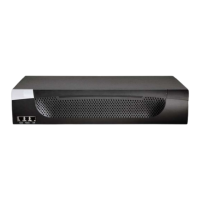USING THE WEB INTERFACE
EATON Managed ePDUt User’s Guide S 164201xxx Rev 1 DRAFT 10−OCT−2008
52
7. Select the type of LDAP server from the Type of external LDAP server list. Your
choices are:
S Generic LDAP Server
S Novell Directory Service
S Microsoft Active Directory
8. Type the following information in the corresponding fields. The LDAP needs this
information to verify user names and passwords.
S Login name attribute(also called as ˆAuthorizationString˜)
S User entry object class
S User search subfilter (also called as ˆBaseSearch˜)
9. If you selected Microsoft Active Directory in Step 6, enter the domain name in the
Active Directory Domain field.
10. Click Apply. LDAP authentication is now in place.
Setting Up RADIUS Authentication
To set up RADIUS authentication:
1. Select Device Settings, and then select Authentication. The Authentication Settings
page displays. The RADIUS parameters display on the right side of the page.
See Figure 49.
Figure 49. Authentication Page – RADIUS Parameters
2. Select RADIUS.
3. Type the IP address of the RADIUS server in the Server field.
4. Type the shared secret in Shared Secret field. The shared secret is necessary to
protect communication with the RADIUS server.
5. By default, the ePDU uses the standard RADIUS ports 1812 (authentication) and
1813 (accounting). If you prefer to use non−standard ports, change the ports.

